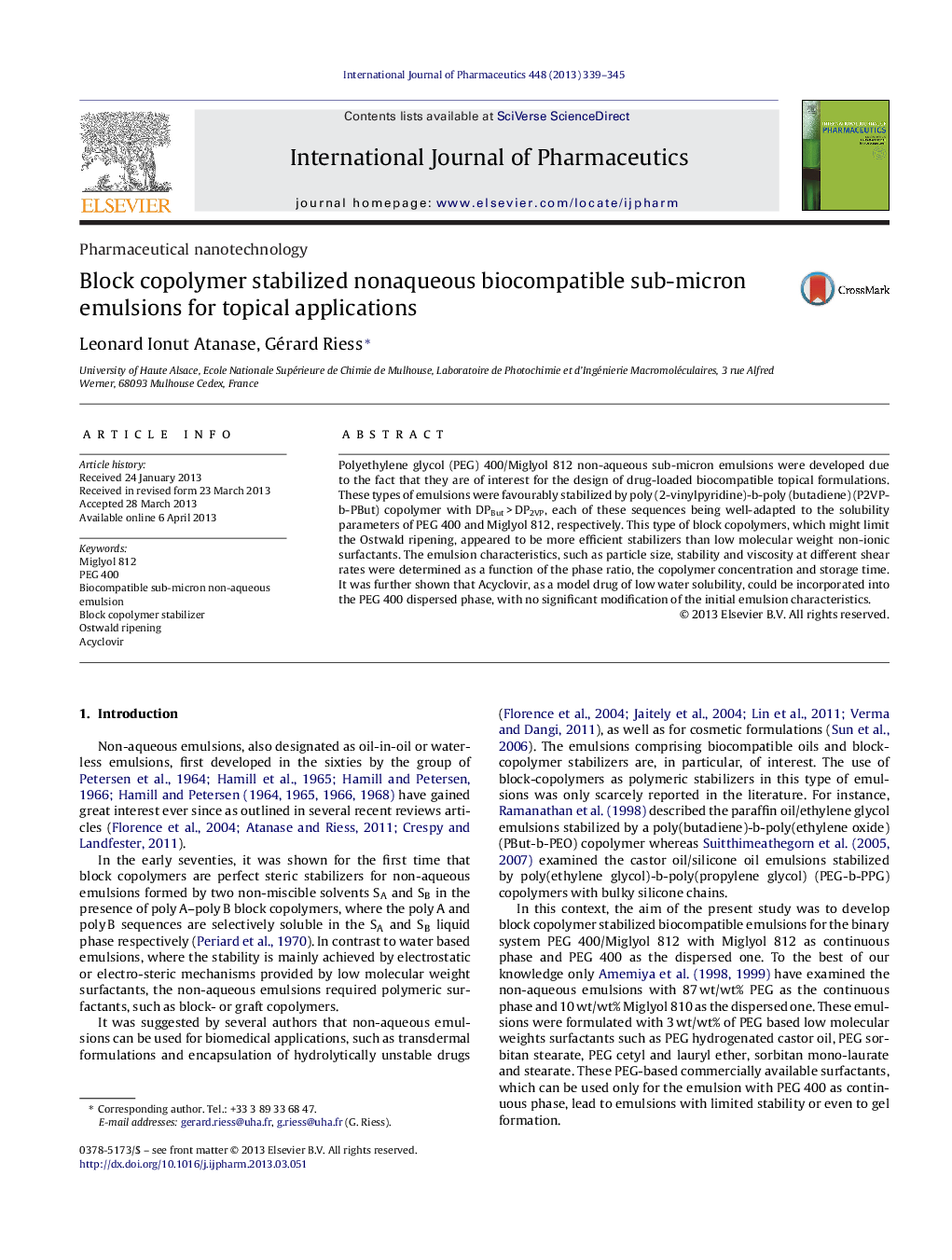| Article ID | Journal | Published Year | Pages | File Type |
|---|---|---|---|---|
| 2502486 | International Journal of Pharmaceutics | 2013 | 7 Pages |
Polyethylene glycol (PEG) 400/Miglyol 812 non-aqueous sub-micron emulsions were developed due to the fact that they are of interest for the design of drug-loaded biocompatible topical formulations. These types of emulsions were favourably stabilized by poly (2-vinylpyridine)-b-poly (butadiene) (P2VP-b-PBut) copolymer with DPBut > DP2VP, each of these sequences being well-adapted to the solubility parameters of PEG 400 and Miglyol 812, respectively. This type of block copolymers, which might limit the Ostwald ripening, appeared to be more efficient stabilizers than low molecular weight non-ionic surfactants. The emulsion characteristics, such as particle size, stability and viscosity at different shear rates were determined as a function of the phase ratio, the copolymer concentration and storage time. It was further shown that Acyclovir, as a model drug of low water solubility, could be incorporated into the PEG 400 dispersed phase, with no significant modification of the initial emulsion characteristics.
Graphical abstractFigure optionsDownload full-size imageDownload high-quality image (240 K)Download as PowerPoint slide
